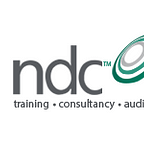Constructive Examples of Top Management Commitment Towards Quality Management System
In the recent times, there have been a lot of discussions regarding the new ISO 9001:2015 leadership compliance. Some of the prominent topics discussed were leadership roles and risks associated with leadership battles, advice from qualified professionals, ISO 9001:2015 demonstrating leadership, etc. The Clause 5.1 of ISO 9001:2015 requires the top level management to establish commitment and leadership to adhere to the quality of the entire management system. Additionally, the top management must work to improve the system time and again.
However, leading quality professionals feel that many top management bodies, 67% of them to be precise, are not entirely committed to fulfilling these requirements. Therefore, the professionals demonstrated the level of expected commitment by sharing three prolific examples.
- Example 1: Connecting with the Customers
One of the important aspects of Qualys transition to ISO 9001:2015 has been focused to formalize the present activities. For instance, Mike Pound, Managing Director of Qualys has been visiting customers of the company every now and then for the last 22 years. However, presently he has turned these meetings as a part of his duty by setting aside time to contact three customers per month.
Mike said, “Qualys has grown to around 50 employees, and now, it has become extremely crucial for the firm to ensure that we connect with the customers in order to align their expectations with our strategies.” He further added, “In the last month, the company has been in touch with Bunzl, Biocair, and W.E. Rawson. And, I find that contacting customers can be extremely insightful and I think all the managing directors should take some time out to understand the opportunities and risks that their customers deal with.
2. Example 2: Stimulating Departments Communication
During the User Group 2017, John Oakland spoke in depth about how a large-scale textile manufacturer had transformed the brand’s reputation by demonstrating top-notch performance.
John revealed, “A particular brand had a poor reputation for on-time delivery, however, the operational and quality team worked hard for two or three years to rectify this negative reputation. Eventually, they delivered absolutely exceptional on-time services to their customers.”
After years of hard work, they asked all their customers, “What do you think about the delivery timing now?” Unfortunately, the customer said that it was still poor and this was because people were still seeing them as the brand that did not live up to the desired quality of delivery expectation.
John further elaborated, “Then, the quality team understood they had to educate and train the sales team to contact the customers and show them the present performance records, which shows they had been delivering products and services on time.”
Quality managers need to work on delivering communicative performance. If they don’t help the customer translate the quality performance in the business language, there will be no change in brand’s public outlook.
3. Example 3: Rendering the Right Tools
The Key Account Manager, Gemma Bladan, at Qualys said, “Mostly in the organization, leaders signify their commitment by rendering required tools to set in, connect, and manage quality.”
For example, the University of Leeds is quite quality-driven. Messages are derived from the top management of the organization using the electronic quality management system, EQMS, which inculcates a very developing and positive company culture.
Many management teams invest in EQMS to demonstrate their commitment to quality in the following ways:
· Informing employees of the importance of the system
· Making it efficient for people to participate, take ownership, and manage their responsibilities.
· Investing in a solution that benefits everyone
· The dashboard of KPI offers an instant, real-time image of the organization.
Here we go; above were the three eminent examples of effective quality management system that demonstrated utmost commitment to delivering quality in order to be in compliance with ISO 9001:2015 standards.
